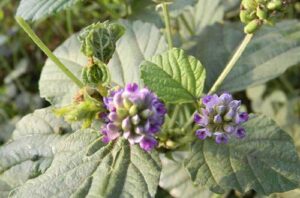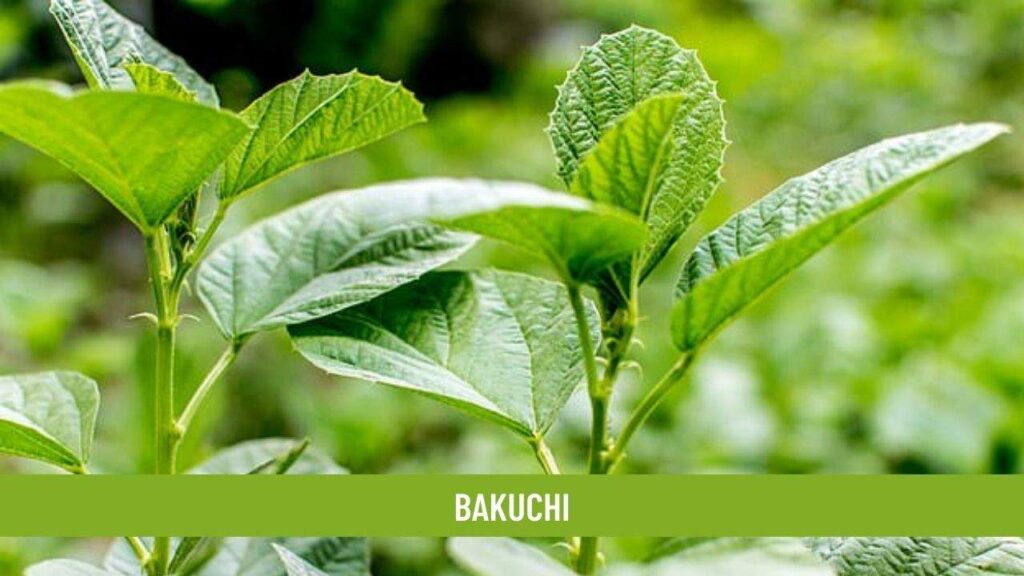Herb
Bakuchi (Psoralea corylifolia) Herb Ayurvedic Overview
Bakuchi (Psoralea corylifolia) is a leguminous, erect, annual herb that grows 60 -100 cm tall. It consists of dry ripe fruits of Psoralea corylifolia Linn. (Fam. Leguminosae). The plant contains rounded and straightforward leaves at the apex, and its flowers are bluish-purple colored. The fruits are slightly compressed and are about 5 mm long. Bakuchi is distributed mainly in tropical and subtropical regions like India, China, Southern Africa. In India, it is mainly found in Rajasthan, Bengal, Deccan, Uttar Pradesh, and Karnataka.
As per Ayurveda, Bakuchi helps manage Vitiligo spots because it is rich in Kusthagna properties and works as Rasayana, eliminates harmful toxins from the body and shrinks the white patches of an individual. It has its ethnomedicinal importance and plays a significant role in the management of various diseases. It has both curative values as well as nutritional values. Acharya, Charaka Bakuchi is described as Shaka Varga. Bakuchi (Psoralea corylifolia) every part is beneficial for medicinal use. Roots, leaves, stems, seeds are used to manage the skin problems, such as leucoderma, skin rashes, infections.
Bakuchi seeds have great medicinal values. They are purgative, antipyretic, antiemetic properties and are beneficial in urinary discharge, leucoderma, skin diseases. The extract of Bakuchi has been reported to possess antioxidant, anti-inflammatory, antibacterial, antifungal, antitumor, immunomodulatory activities. The plant formulation can be used externally as well as internally. For externally, it can be mix with some base oil, and internally, it can purify.
Table of Contents
Scientific Classification of Bakuchi (Psoralea corylifolia):
- Kingdom: Plantae
- Order: Fabales
- Family: Fabaceae
- Genus: Psoralea
- Species: P. corylifola
Bakuchi (Psoralea corylifolia) Synonyms:
- Sanskrit: Avalguja, Somaraji
- Assamese: Habucha
- Bengali: Bakuchi, Somraji, Hakucha Veeja
- Gujrati: Bavachi
- Hindi: Babchi, Bavachi, Bakuchi
- Kannada: Bauchige, Bhavantibeeja, Bhavanchigid, Baukuchi
- Kashmiri: Babchi
- Malayalam: Karkokil
- Marathi: Bawchi
- Oriya: Bakuchi
- Punjabi: Babchi, Bavchi
- Tamil: Karpokarisi, Karpogalarisi, Karbogalarisi
- Telugu: Bavanchalu
- Urdu: Babchi
Bakuchi (Psoralea corylifolia) Description:
 a) Macroscopic: The Fruits of Bakuchi are dark chocolate to almost black color with pericarp adhering to the seed-coat, which is 3 – 4 mm long, 2-3 mm broad, bean-shaped, somewhat compressed, glabrous, and closely pitted.
a) Macroscopic: The Fruits of Bakuchi are dark chocolate to almost black color with pericarp adhering to the seed-coat, which is 3 – 4 mm long, 2-3 mm broad, bean-shaped, somewhat compressed, glabrous, and closely pitted.
The seeds are campylotropous, non endospermous, oily and free from starch, odorless, but when the chewed smell of an aromatic essential oil felt, taste bitter, unpleasant, and acrid.
b) Microscopic: The transverse section of fruit shows a pericarp with depressions and prominent ridges. It consisting of collapsed parenchyma and large secretary glands containing oleo-resinous matter testa. An outer layer of palisade epidermis is much thickened in the inner tangential.
Identity, Purity, and Strength of Bakuchi (Psoralea corylifolia):
- Foreign matter Not more than 2 percent, Appendix 2.2.2.
- Total Ash Not more than 8 percent, Appendix 2.2.3.
- Acid-insoluble ash Not more than 2 percent, Appendix 2.2.4.
- Alcohol-soluble extractive Not less than 13 percent, Appendix 2.2.6.
- Water-soluble extractive Not less than 11 percent, Appendix 2.2.7.
Chemical Constituents of Bakuchi (Psoralea corylifolia):
Bakuchi (Psoralea corylifolia) is rich in Essential oil, fixed oil, psoralen, corylin, bavachalcone, psoralidin, isopsoralen and bakuchiol. Other than this, it is rich in flavonoids, such as corylifolean, corylifolin, corylifolinin, bakuchicin, psoralidin, isopsoralidin, bavachin, isobavachin, bavachinin, bavachalcone, isobavachalcone, 7-O-methyl bavachin, bavachromanol, corylin, corylidin, corylinal, 4-O-methyl bavachalcone, neobavaisoflavone, bavachromene, neobavachalcone, bakuchalcone, isoneobavachalcone, psoralone, isopsoralone, psoralenol, and psoralidin-2,3-oxide diacetate in seeds. The leaves of Bakuchi contains raffinose, psoralen, and isopsoralen.
Ayurvedic Properties and Action of Bakuchi (Psoralea corylifolia):
- Rasa: Tikta, Katu
- Guna: Ruksha
- Virya: Sheeta
- Vipaka: Katu
- Karma: Grahi, Hridya, Vranapaha, Kaphavatahara, Swedajanan.
Ayurvedic Formulation made by Bakuchi (Psoralea corylifolia):
The main Ayurvedic Formulations of Bakuchi are Somaraji Oil, Pancha Nimba Churan, Khadirarishta, Avalgujadi Lepam, Mahamanjishthadi kshayam.
Therapeutic Uses of Bakuchi (Psoralea corylifolia):
The therapeutic uses of Bakuchi are Kushthahara, Tvachya, Shothahara, Aamhara, Hrudya, Jwarahara, Mehahara, Krimihara, Kasahara, Shwashara, Keshaya, Vishtambhahrut, Sara.
Dose of Bakuchi (Psoralea corylifolia):
3-6 gm of the drug in powder form.
Reference:
Ayurvedic Pharmacopeia of India.
For regular health updates, please follow our Social Pages


